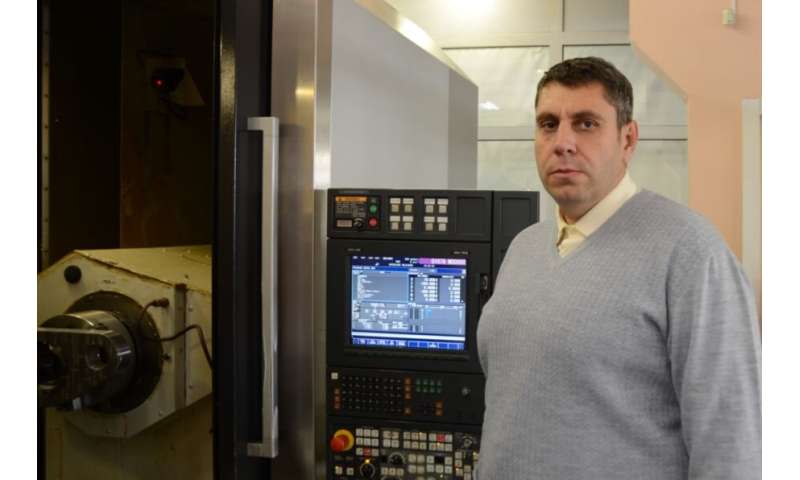Scientists Apply Artificial Intelligence to Online Monitoring of Milling

A scientist from South Ural State University, together with foreign colleagues, obtained a predictive model of deviations from the plane of the machined surface obtained by face milling. Real-time forecasting is made possible by artificial intelligence, which takes into account the power consumption of the main drive of the machine and changes in tool wear in the analysis. The results of the study were published in the highly ranked scientific Journal of Intelligent Manufacturing (Q1).
Artificial intelligence monitors production
The digitalization of production is one of the trends in Industry 4.0. The fourth industrial revolution requires the introduction of modern technologies, thanks to which enterprises will be able to monitor processes independently and predict them, which means that they can produce better products.
Artificial intelligence capable of solving non-routine tasks at a high level is one of the main steps to implement the principles of smart industry. It helps to quickly and cost-effectively achieve the goal of each production: to make a quality product.
Artificial intelligence can be successfully used for online monitoring of various processes in automated production, for example, the state of a cutting tool. Thus, its cutting part will be replaced on time, which will ensure the accuracy of the product processing and the required roughness. Besides, the timely replacement of the cutting part will avoid tool breakage.
Digital equipment diagnostics
Artificial intelligence is used to create predictive models. Danil Pimenov, a scientist at the Institute of Engineering and Technology, senior lecturer at the Faculty of Mechanical Engineering, together with colleagues from Spain, Poland, and the UK, used the technology to predict deviation from flatness, taking into account the wear of the end mill teeth.
"One of the most important indicators of the quality of processed flat surfaces is the deviation from flatness. Therefore, the goal of the international team of scientists was to obtain a predictive model of deviations from the plane of the machined surface in the process of face milling, depending on the power of the main drive of a numerically controlled machine (CNC) and taking into account changes in tool wear. AISI 1045 carbon steel (Russian analog—Steel 45) was studied as a blank. This is a common structural material, from which a huge number of all kinds of mechanical engineering, instrument making, shipbuilding products are made, " Danil Pimenov explained.
Experimental data on face milling were obtained at the SUSU Engineering Research and Education Center based on the Mori Seiki NMV 5000 CNC machining center. On their basis, scientists created a predictive model. this was the task for Dr. Andreso Bustillo from the University of Burgos (Spain). The highest performance was shown by such machine learning methods (a subsection of artificial intelligence) as Random Forest ensembles and the Synthetic Minority Over-sampling Technique (SMOTE). The final stage of the preparation of the research was facilitated by Professor Voitsech Kaplonek from the Koszalin University of Technology (Poland) and Mozammel Miaiz of the Imperial College London (Great Britain).
"The results of the study will be of interest to process engineers who can learn about the expected deviation from the flatness of the workpiece surface. In this case, the installation of new sensors is not required. Modern machine tools with numerical control (CNC) have built-in the ability to monitor the power of the main drive. Models for predicting flatness deviation parameters during face milling can be integrated into automated production systems for online monitoring, " Danil Pimenov said.
This article is the second in a series of studies looking at online face milling monitoring, and in 2018, researchers obtained a predictive model of surface roughness during face milling. The work also traced the dependence of indicators on the power of the main drive of the machine and changes in tool wear.
Scientists intend to continue work that will bring the process of processing parts in production to a new level.
SUSU is a member of the 5-100 Project, intended to increase the competitiveness of Russian universities among the leading research and educational centers.
Research in the field of new technologies is among the priorities of the Ural interregional scientific and educational center Advanced production technologies and materials. The center is currently being created by the joint efforts of Ural Federal University, SUSU, KSU, other regional higher educational institutions, the Ural branch of the Russian Academy of Sciences, industrial enterprises, and governments of the Chelyabinsk, Sverdlovsk, and Kurgan regions.
More information:
doi.org/10.1007/s10845-020-01645-3
Provided by South Ural State University